Before the pasty police come out in force and criticise my ingredients or method, I think it’s important to point out that I am not Cornish. However, my better half is half Cornish and his Grandmother a full on Kernow woman and she has passed on some of her pasty knowledge.
Making pasties is quite personal; only you know what proportions of vegetables and meat you like, how full you want your pasty to be and how big. Because of this I can provide a guide but you can change proportions at will. To make four large pasties I used: one large and one medium potato, half a swede, three small onions and 500g of skirt steak. For the pastry I used 400g of plain flour, 200g butter and enough cold water to make a dough.
First make the pastry by mixing the butter into the flour until you get fine breadcrumbs. For once I did this by hand, not in the blender, and was surprised at my own success. Add a pinch of salt and enough cold water to the breadcrumbs to make a dough then chill in the fridge while you prepare the vegetables. Peel and finely dice all the vegetables; I recommend something good on the radio to keep you company as it will take some time. Put them into a bowl and mix in a good helping of salt and pepper.
Skirt steak is something I had previously found hard to get hold of. I once attempted to purchase it in the Summer months and was abruptly told that skirt was not available at that time of year. I asked where all the skirt had gone; how could all of them simply disappear? I was told that cattle don’t have skirts in the Summer. I didn’t know if she was joking or not. If and when you do get hold of some it is a beautiful cut of meat, hardly any sinew or fat. Dice the skirt up in similar sized pieces as the vegetables.
To assemble your pasty you need to divide the pastry into four and then roll each piece out to the size of a plate. Put a quarter of the vegetable mix into the middle of the pasty, top with the skirt, season again and then put a knob of butter on top. Fold the pastry over sealing the edge with a little water or egg. I’m not a good crimper so I didn’t try very hard but crimp the edge of the pastry as best you can.
Brush each pasty with some egg before putting into the oven at 180C for around fifty minutes or until the pastry is lovely and golden brown.
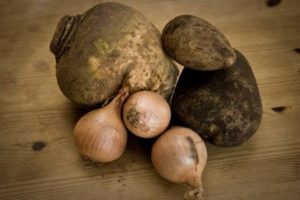

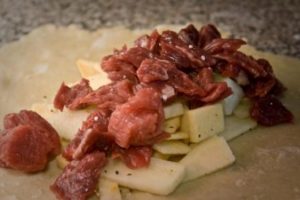

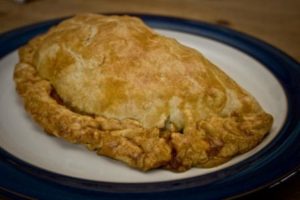
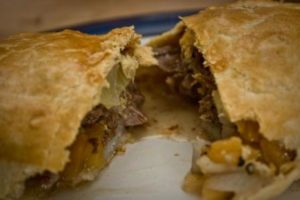
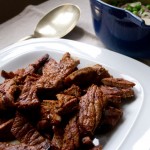
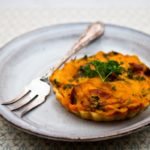
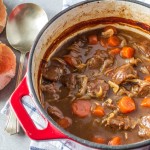
This looks so delicious, I can imagine the aroma when these are pulled out fresh from the oven!
They always smell so wonderful! Have you ever done one with a different filling, like a curry? Would be interesting to try, might have go!
Nice with the wonderful pastry around. Success to making the pastry with hands and at times, I do this do. I hate the washing of all the processor and utensils and probably thats another reasons for using my hands.
I love Cornish Pasties – these look lovely. I believe the ‘skirt’ is from the underbelly (the plate) of the animal, so it would be slightly strange to say it isn’t available? I should think the butcher wanted to sell you a more expensive cut.
I had to giggle at the thought that cattle don’t have skirt steaks in the summer…I find that cut quite elusive as well 🙂 My hubby would be delighted with these pasties…your crust looks incredible 🙂
They look so yummy! The other day I was reading about them and I thought the history of the dish to be really interesting, how they declared nobody can call it Cornish pasties unless they are made in Cornwall.
Looks excellent. I have never made one. I had them in Devon but never in Cornwall and surely they must be at their best over there.
Have a nice weekend!
Looks very appetizing & lovely! I ‘m bookmaking this recipe ! Thanks for sharing! Have a lovely weekend ! 🙂
This recipe sounds delicious. I always wondered how pasty is made, so I am glad to have found your post. I will give it a try for sure, thank you for sharing 🙂
Enjoyed reading your post.
looks fantastic! Making me hungry….your whole blog is making me hungry actually 🙂
Sounds like the way I like it. I can not imagine pickle in this but to each his own. No judging 🙂
You are right, there is nothing like pastry smell in the house!
Looks really good! I love the step-by-step presentation!
This looks delicious. We’re going to Cornwall for Easter and this post has wet my appetite for all things pasty! Great pics.
wow, this looks and sounds absolutely fantastic…a seriously mouthwatering dish
Yum this looks amazing! What a lovely blog you have! I looks forward to looking around and reading a bit! Have a great week!
I was wondering if you would like to put up a link to this beef recipe in my Food on Friday Series. Your pasty looks great.
Great that you linked in. I am following your blog now, too. Have a nice week.
If you’re in the US, depending on the region, skirt steak is known by other terms, such as flank steak. I was born and raised in New England, but when I lived in Michigan for three years, through trial and error, I learned that it was called flank. BTW, in Michigan, especially in the UP, or Upper Peninsula, because there were a lot of Cornish settlers originally, the pasty is a favorite, though unfortunately the ones sold in restaurants or in the markets tend to be dry, and not flavorful, just plain awful. I saw a mention of a type of pasty made by a particular restaurant in Cornwall, where aside from a bit of butter, includes a spoonful of double cream on top of the meat and vegetables, before closing the pastry crust. Anyone have a recipe for that kind of pasty?